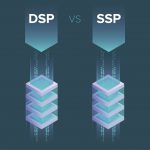Table of Content
This is a technology that allows web owners to sell digital ad spaces in automated auctions. Web owners can sell and manage video, display, or native ad inventory through mobile or desktop SSP. Here is how they work and why they are essential to publishers.
What do supply-side platforms do?
Sell-side platforms, also known as yield optimization platforms, are used by publishers to sell their ad impressions at the highest price possible.
SSPs operate the same as their counterpart, the DSP (demand-side platforms) does. DSPs are used by online marketers to buy ad impressions inventory at the lowest price possible.
But SSPs are specifically designed to help web owners to sell ad impressions (video, mobile, display) at the maximum cost per thousand impressions (CPM).
How do SSPs help publishers in getting the highest CPM?
Through a supply-side platform, web owners can showcase their ad inventory to a large pool of advertisers on various ad networks, ad exchanges on the demand side platform. The idea is to present the ad impressions to a large number of media buyers, and in the auction, the demand will drive the prices to the highest CPMs.
The automation in SSPs is effective in two ways. SSP automation fastens the traditional back and forth ad impressions negotiations between media buyers and publishers. The automation also allows the publisher to gather huge data that wasn’t possible in the traditional setting. They can use this data to boost their views per ad, attracting more buyers and increasing their CPM.
How do SSPs use data?
Besides presenting their available ad impressions and getting the highest CPM, SSPs allow the publishers to share the data they have about their customers regarding a specific impression.
When a publisher presents available ad spaces through an SSP, ad exchanges, DSPs and ad networks will check the content of the page, where the impression is available as well as any information there is about the web visitor.
The data includes interests, browsing history, demographics, age, income etc. The SSP then matches the data against what the media buyer is searching for.
If the marketer’s requirement and the publishers content overlap, the DSP bids the ad impression in an auction in real-time on behalf of the advertiser. If the bid wins, the ad is published on the web owner’s site.
Are SSPs the same as ad exchanges?
SSPs are becoming popular and attracting very many publishers selling ad spaces. Many of them are now beginning to act as ad exchanges, and others are even launching their ad exchanges. Media buyers can access multiple ad impressions inventory from different publishers through SSPs.
Although the line between the SSPs and ad exchanges is getting fuzzy, there are still some things an SSP can do that an ad exchange can’t do.
An SSP can connect different ad exchanges, DSPs and ad networks. SSPs allows web owners to control pricing floors, minimum bids on certain ad impressions as well as avail some ad impressions to specific networks, exchanges and buyers.
Final Thoughts
Technology advancements have made the advertising industry very effective. SSPs allows publishers to avail the ad spaces to advertisers.
SSPs also help in sharing the content the web visitors are viewing and their data. This enables marketers to present the right ads to potential customers.











